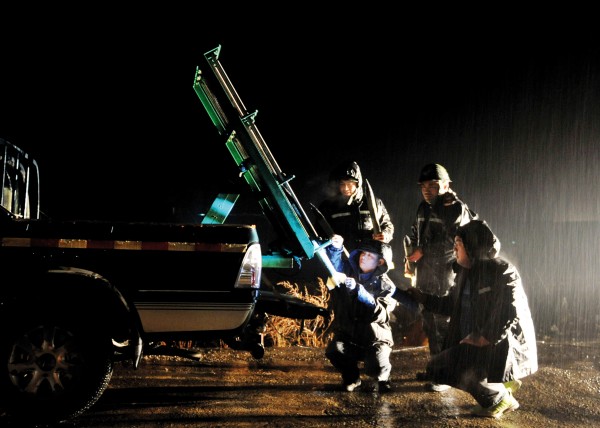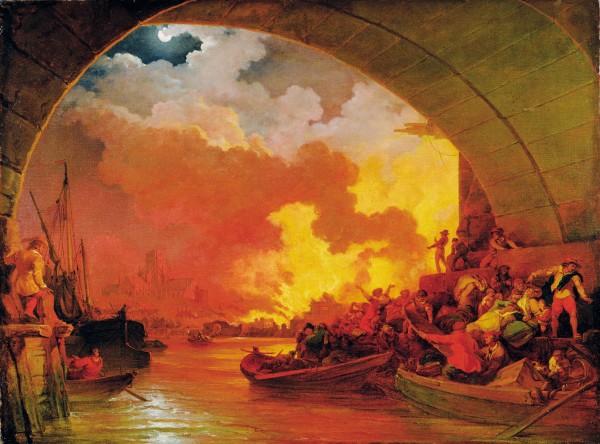Lessons from the ice

To better understand and appreciate your own country, there is nothing quite as good as a long trip overseas. By the same token, an understanding of how our weather works can be enriched by a long look at what goes on in some far corner of the Earth, such as the South Pole.
Antarctica has a reputation as one of the stormiest places on Earth—and storms are typically associated with heavy precipitation. Paradoxically, however, much of Antarctica receives such a small amount of snow that it qualifies as a desert.
On the high plateau of the interior less than 50 mm of snow (equivalent to 5 mm of rain) falls each year. On the coast the average precipitation is mostly between 100 and 400 mm, although a few areas have as much as 1000 mm, notably the area just west of the Antarctic Peninsula, bordering the Bellingshausen Sea, which is a favoured area for depressions to make landfall.
The main reason for Antarctica’s lack of precipitation is the extremely cold air temperatures. The amount of water vapour air is able to contain depends on its temperature. The warmer the air, the more water it can hold. For example, air with a temperature of 25°C and 100 per cent humidity (such as might approach New Zealand from the tropics in summer) contains 20 grams of gaseous water per kilogram. Air with a temperature of 5°C and the same humidity approaching Invercargill from the south in winter has only 5 grams of gaseous water per kilogram.
But at the South Pole, air at -50°C and 100 per cent humidity contains less than one tenth of a gram of gaseous water per kilogram.
When this air at the pole is cooled further, some of its gaseous water changes to ice, forming tiny crystals that fall slowly to the ground. Since the amount of water available is minute, the gaps between the crystals are so large that no cloud is visible, and the ice crystals fall from a blue sky. Known as “diamond dust,” the falling ice crystals give rise to a rich variety of optical phenomena in the sky, including arcs, circles and sun pillars.
There are several reasons it is so cold in Antarctica. Most obviously, the sunlight is less intense there, since it strikes the Earth’s surface at an oblique angle, and fewer of the Sun’s rays reach each square metre of the surface compared with the situation at the tropics.
Also, by falling obliquely, the Sun’s rays have a greater amount of the Earth’s atmosphere to cross in order to reach sea level in the Antarctic, and so a greater portion of the sunlight is scattered by molecules in the atmosphere.
Even so, in summer the sun shines 24 hours a day, and the total amount of sunlight reaching the surface in the course of a day is greater than in the tropics. However, almost all of Antarctica is covered in snow or ice, which acts like a mirror, reflecting the vast majority of the incoming sunlight straight back to space. It is this loss of sunlight that intensifies the cold and has allowed 30 million cubic kilometres of ice to build up over a continent that was once home to beech forests.
Over a large part of east Antarctica the ice is more than three kilometres thick, and this also contributes to the low temperatures of the ice surface, because the higher the altitude, the lower the air temperature.
Once sunlight begins to wane, in the second half of summer, the temperature begins to fall as the ice surface radiates more heat away to space than it absorbs from the sunlight.
To warm-blooded beings such as ourselves, it may seem strange to think of a freezing surface radiating heat, but all things do so, unless they are cooled to -273°C, which is absolute zero. The temperature of the ice surface does not fall this far, even though the sun never shines for months on end in winter. Instead, once the surface air temperature has fallen to around -70°C, a state of equilibrium is reached between heat radiated downwards from the atmosphere in the night sky and heat radiated away from the surface.
At this point the cold ice has cooled a thin layer of air just above it. About 500 metres up, the air temperature is some 25°C warmer, and downward radiation from this air prevents the surface cooling further.
Air in the cold layer is much denser than the air above or, more importantly, the air at a similar altitude immediately adjacent to the continent. So, with the help of gravity, the cold air tends to slide off the sides of the continent down to the sea.
In Antarctica, the downslope flow of cold air, known as a katabatic wind, is channelled by the terrain and can reach speeds of 150 kph or more. By this stage the wind will have picked up large quantities of snow lying on the surface, thus forming a blizzard, with a visibility of only a few metres.
When the wind is strong it tends to blow the sea-ice away from land, creating large areas of open water known as polynyas. As the cold air blows across the polynya it chills the surface water, causing new sea-ice to form, which in turn is blown away. As the sea-ice forms, it leaves behind salt-enriched water, which is dense and consequently sinks to the sea-floor.
Over thousands of years this water makes its way north, and eventually rises again in the North Atlantic, where it influences the climate of the northern hemisphere. As well as being factories producing large amounts of sea-ice and cold salty water, polynyas also serve as refuges for wildlife.
Ironically, the early explorers sought out the open waters of the polynyas, because they enabled them to approach close to the coast, little realising that they had thereby chosen areas with the most frequent blizzards.
The Australian scientist Douglas Mawson was one of the first to appreciate the true fury of the katabatic wind, when he wintered over at Cape Denison in 1912.
He vividly recorded his experience in his book The Home of the Blizzard: “The climate proved to be little more than one continuous blizzard the year round; a hurricane of wind roaring for weeks together, pausing for breath only at odd hours.”
Even during the pauses, it turned out that the wind had only lifted above the surface where it continued to roar along, spawning occasional whirlwinds which wandered over the landscape wreaking their own havoc on whatever they touched.
Because it was so cold, the snow crystals in one storm were so light that it was possible to walk through the fallen snow even though it was over a metre deep. So much air was trapped in the snow that the huskies could breathe in it. They soon gave up the effort of leaping to the surface, like dolphins, when they moved around, and just ploughed through it, their progress indicated by a wave moving along the snow surface.
The cold of Antarctica poses considerable problems for the plants and animals that live there—problems they have solved in a variety of ways. The fish have antifreeze to prevent ice crystals forming in their blood in the sub-zero water temperatures. Warm-blooded animals, such as seals and penguins, have thick layers of insulation to keep out the cold, and tend to have large bodies, as this maximises heat production while minimising heat loss. Emperor penguins are so large that they must breed in deep winter, incubating the eggs on top of their feet, in order for their chicks to grow enough during the summer to be able to survive the next winter.
Food is harder to come by on land, so the animals that spend all their time there are a good deal smaller. The largest is a tiny insect, the Antarctic springtail, which is about one millimetre long, and is full of polyalcohols, which enable it to survive cooling to –30°C.
There is one tiny plant that keeps out of the wind by growing inside rocks, but only a few millimetres under the surface, so as to still get enough sunlight for photosynthesis.
So what does this strange world—so different from New Zealand—have to do with our weather? The answer is: “Plenty!”
The general circulation of the atmosphere over the whole Earth works like a heat engine. The warm land and ocean surfaces in the tropics provide heat to the atmosphere, which it carries towards the poles. There it is transferred to the rocks and ice, which radiate it away to space. Because of the Earth’s rotation, the air currents moving heat poleward are deflected from a north-south direction to become westerlies in the latitudes where New Zealand lies, giving us a climate that is not too hot and not too cold.
Also, the Antarctic continent is not symmetrical about the pole, but juts out on one side, with its highest point some 10 degrees of latitude away from the pole. This bulge induces a large-scale wave pattern into the westerlies, which, as it waxes and wanes, promotes the development and decay of lows and highs near New Zealand.
And, of course, the Antarctic is the source of cold air for some of our best southerly outbreaks, bringing joy to skiers in winter.

















